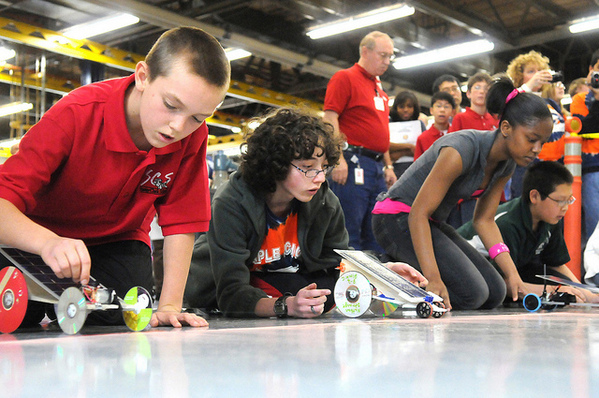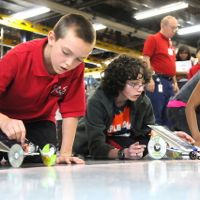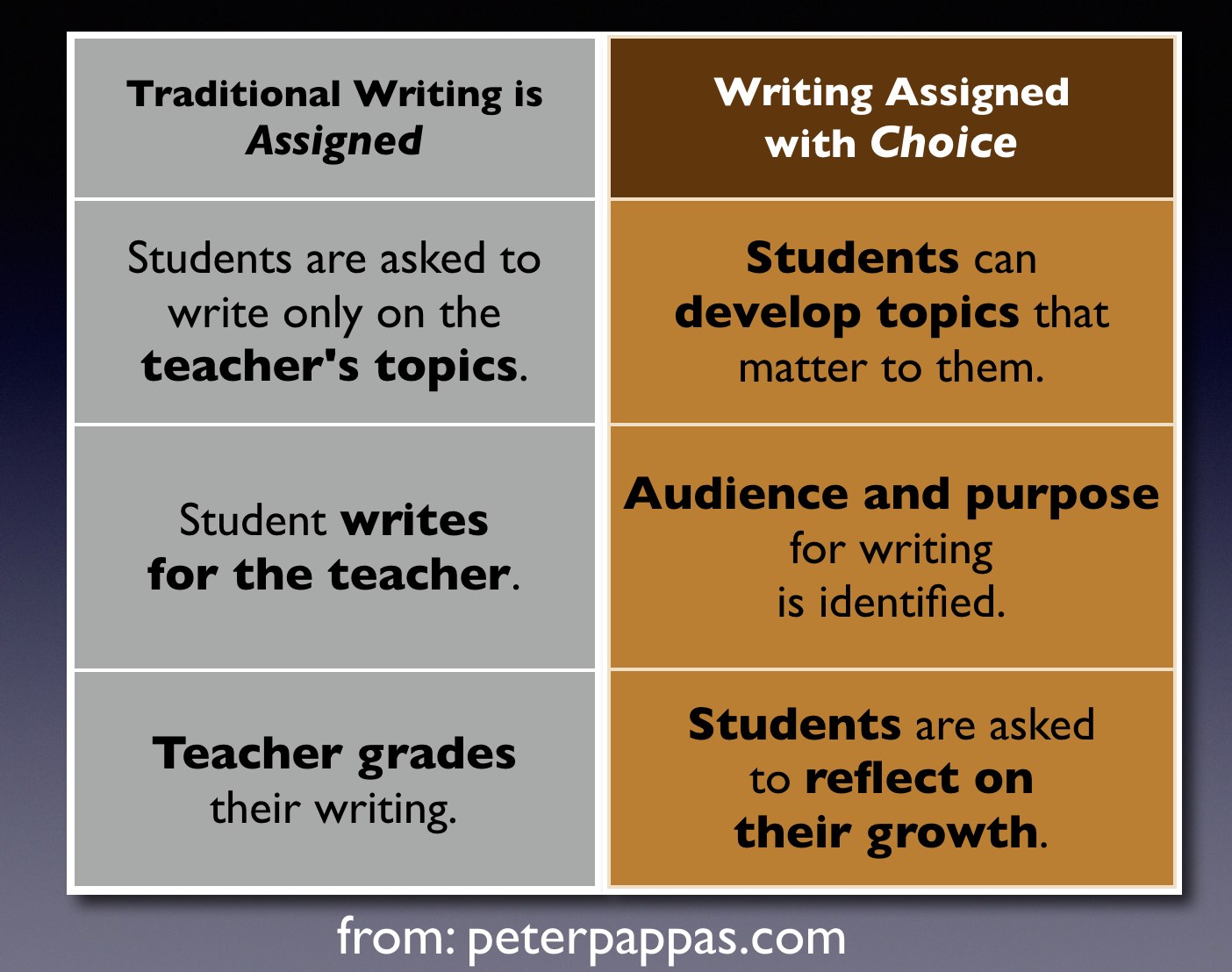I’ve been invited by West Clermont Local Schools (Cincinnati OH) to do an opening day presentation for secondary teachers. This is not the first time we’ve collaborated. Earlier this year, I assisted them in this project – “How to Use Web 2.0 to Create On-line Professional Development.” Looks like they have their PD act together!
The topic they assigned me for this week’s presentation is “How to engage students in the 21st century classroom.” This post outlines the message I’ll take to West Clermont. While the primary audience for this post is teachers in the classroom, I think there’s also a useful message for presenters who want to connect with their audience.
1. Remember that engagement is founded on choice: A task becomes engaging when you have an opportunity to make choices about content, process and product. For example here’s a diagram that shows how easy it is to transform a traditional writing assignment into a more engaging one.
See “First Day of School? Here’s How to Get Students Thinking” for a student-centered way to kick off the school year.
2. Alter the traditional information flow: All the one-way broadcast information sources are losing audience – TV, record industry, teachers who lecture. I’ll bring my TurningPoint audience response system to give them space in the information stream. We’ll also capture “backchannel” dialog with a Wiffiti screen. More on using Wiffiti in presentations. [Note: Discussion was so lively – I didn’t get a chance to use Wiffiti. A good problem!]
3. Thinking critically is more engaging than listening: Knowledge is only superficially transmitted by telling someone something. Students (and audiences) are engaged when you create learning environments that require them to apply their own analysis and evaluation to constructing meaning. Make it partial assembly required.
As a teacher, I was always turned off by trainers who weren’t using the strategies they were advocating. My workshops give the teachers a taste of how students will respond to the strategies in an authentic learning experience. As one teacher commented in her evaluation of my workshop, “Peter demonstrated his own method for rigor and relevance while teaching us, so we participated as our students would. The workshop was effective because he made us reflect on our classroom practice and our expectations of students. Then he supplied us with techniques and strategies to improve instruction.”
4. Relinquish responsibility for learning to the student (also this blog’s tagline): Students can develop their own iTunes genre scheme – what make you think they can’t analyze, evaluate and create? Many teachers feel they’re competing (unsuccessfully) with technology for student attention. I see things differently. Students aren’t engaged with technology because it lights up and beeps. They’re engaged with technology because it puts them in charge of information they access, store, analyze and share. It gives them something they rarely get in the classroom – choice. The lesson revision I outline in point 1 is about control (not technology) in the classroom.
5. Always keep in mind that the essence of teaching (or presenting) is creating learning experiences that provoke reflection: Students who are simply asked to follow instruction have nothing to reflect upon. (The same is true for audiences who have been asked to do little more than listen). Students who are offered the opportunity to explore their own approaches and share them with their peers are well on their way to life-long learning. I’ll bet “life-long learning” is in your school district mission statement – or is it vision statement? (I could never remember if I was on a mission or having visions). For more on reflection, see my series detailing my Taxonomy of Reflection.
PS. Here’s my “handout” for the West Clermont workshop. Download Engagement-presentation (3MB pdf). It’s a glimpse into my workshop – but I can’t “hand” you the message. Remember, it’s about the experience (and reflection) not simply the content.
Like this:
Like Loading...








